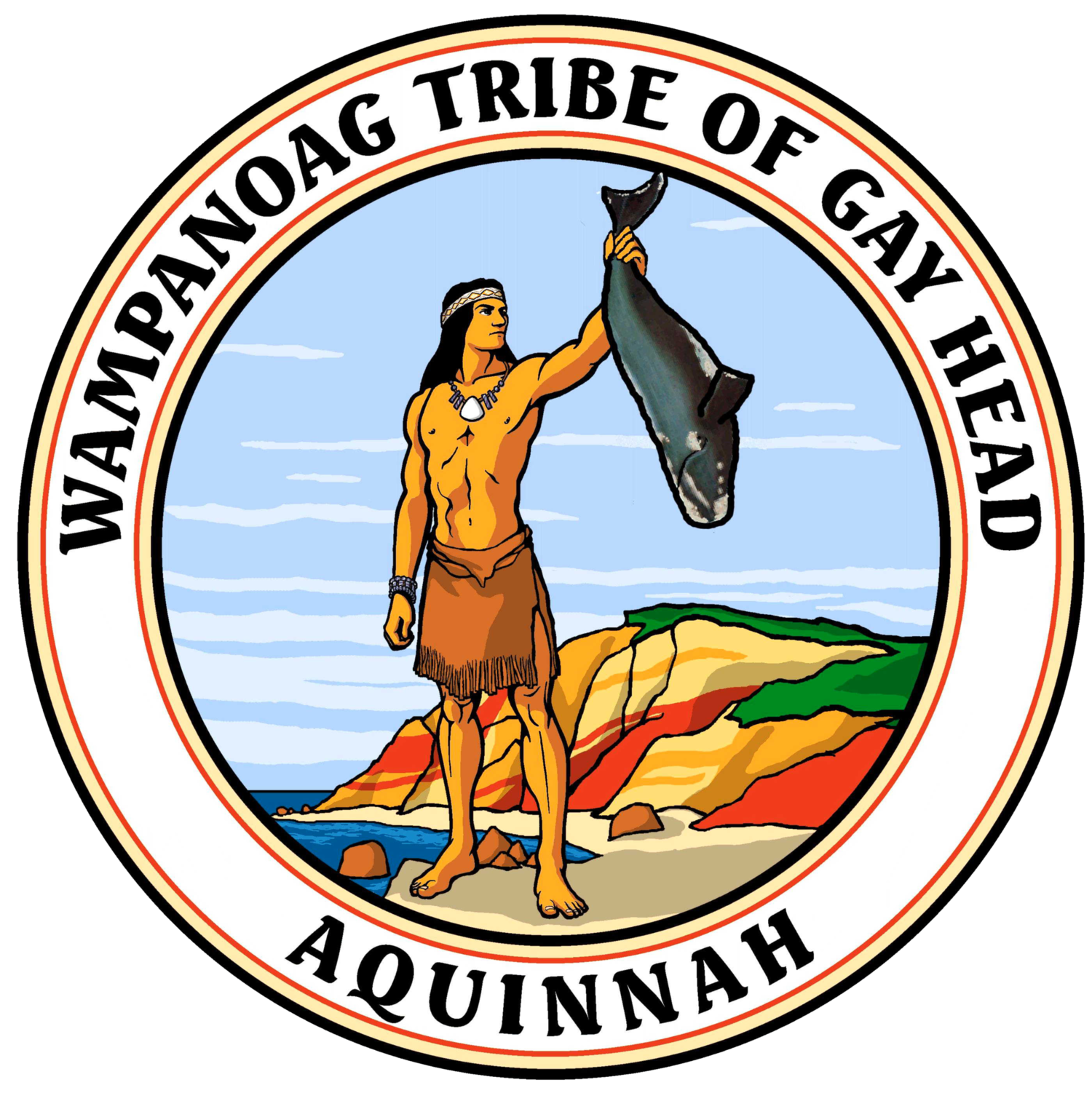Winter Flounder Enhancement Project
Ecosystem Analysis (clockwise from top left):
counting and measuring of wild winter flounder, core sampling, benthic trawl, beach seining.
Winter flounder, once a commercially and culturally important fish stock in Menemsha Pond, has declined significantly in recent years. Under current fishing regulations, it is likely that winter flounder stocks will be unable to rebound to sustainable levels, making it an excellent candidate species for stock enhancement. In 2011 and 2012, the Wampanoag Tribe’s Natural Resources Department participated in a collaborative effort with the University of New Hampshire and the Martha's Vineyard / Dukes County Fishermen's Association to enhance winter flounder. This effort, the result of a grant received by the University of New Hampshire, studied the effectiveness of reintroduction efforts for this finfish species. The goal of this project was to restock the pond by releasing hatchery raised flounder in order to determine a viable management strategy.
Over the first year of the project, ecosystem analyses was conducted to determine optimal winter flounder habitat and release strategies within Menemsha Pond. Biological data on local fauna and pond water quality was compiled using beach seines, benthic trawls, core sampling, and laboratory probes. This data determined the spatial and temporal distribution of the wild winter flounder population, potential predators, prey species, and water quality preferences. These aspects helped establish the most efficient strategies for release size, season, and location to ensure optimal survival.
Hatchery Operations (clockwise from top left): Honeymoon tank, hatchery, collection of fertilized eggs, fertilized egg cluster, adult winter flounder, release of spawned adults. Tribal member Serel Garrin was a key member of the team.
The project used the Tribal hatchery facility located on Menemsha Pond in Aquinnah to spawn and grow the winter flounder. The hatchery, which had previously been used in shellfish cultivation, had to be refitted for finfish production.
A breeding stock of 200 adult winter flounder was collected from local waters to ensure that their offspring would maintain the genetic integrity of the indigenous flounder population. The adults were placed in “honeymoon” tanks and allowed to spawn naturally. Their fertilized eggs were collected and placed in grow-out tanks. After spawning was complete, the adults were released.
Once hatched, the young flounders begin eating rotifers, a near microscopic aquatic animal. These rotifers had been cultivated right at the Tribal hatchery to be used as flounder food, and given nutrients that are passed on to the flounders when they are consumed. After three weeks, the hungry flounder fry need a larger food source and are fed Artemia, a type of brine shrimp (also called sea monkeys). Finally, about 2 months post-hatch, the flounders are given an enriched pellet food until their release.
The spawned flounders were closely monitored, both pre- and post-hatch. With the use of microscopy, picture and video images were taken on a daily basis to gauge flounder health and development. By using media-sharing software, real time visuals could be uploaded to flounder experts at UNH to receive immediate feedback. With the implementation of these new monitoring and communication strategies, we were able to greatly increased productivity and decrease mortality.
Post hatch development: 3days, 6days, 14days, 37days, 66days
After six months of growth, flounders from the project were tagged with an elastomeric tag, similar to a tattoo, used to identify individuals spawned within the hatchery. Roughly 5,000 juvenile flounders had to be tagged, a lengthy process that took delicate precision in order to administer safely the injected tag. Two different color tags were used to distinguish flounders by their release strategy. Flounders were released in the optimal location within the pond as identified by the previous year’s study. Half the stock was placed into underwater acclimation cages within the pond for two days in order to become accustomed to their new environment. After the two days, the caged, as well as the non-caged fish were released directly into the pond.
Post-release, flounders were monitored to gauge their survival based on release strategy. The UNH researchers determined that the flounders allowed to acclimate to their new environment had a greater tendency to stay in their estuarine release area longer, which could mean that the use of acclimation cages could be a benefit to the survival of hatchery-raised flounders. The results of this project could be used to start a rebound of the winter flounder as a commercial species.
Hatchery technician shares flounder project with Tribal youth
Throughout the project, the public has taken a great interest in the winter flounder project. Those involved with the project have taken great pleasure at the opportunity to inform the public on the efforts of the researchers. Many school children of various ages have visited the hatchery to be educated about the restoration project, and the biology behind the life cycle of the flounder.
This project has been a cooperative effort. Support has stemmed from the County of Dukes County, County Commissioners, and the shellfish departments of Aquinnah, Chilmark, Vineyard Haven and Oak Bluffs to provide capture data and support in an effort to make this project a reality. Winter flounder is yet another common denominator between the Tribe, County, and Towns. The importance of restoration efforts and assuring sustenance foods survival for the future is an important issue Island-wide.





